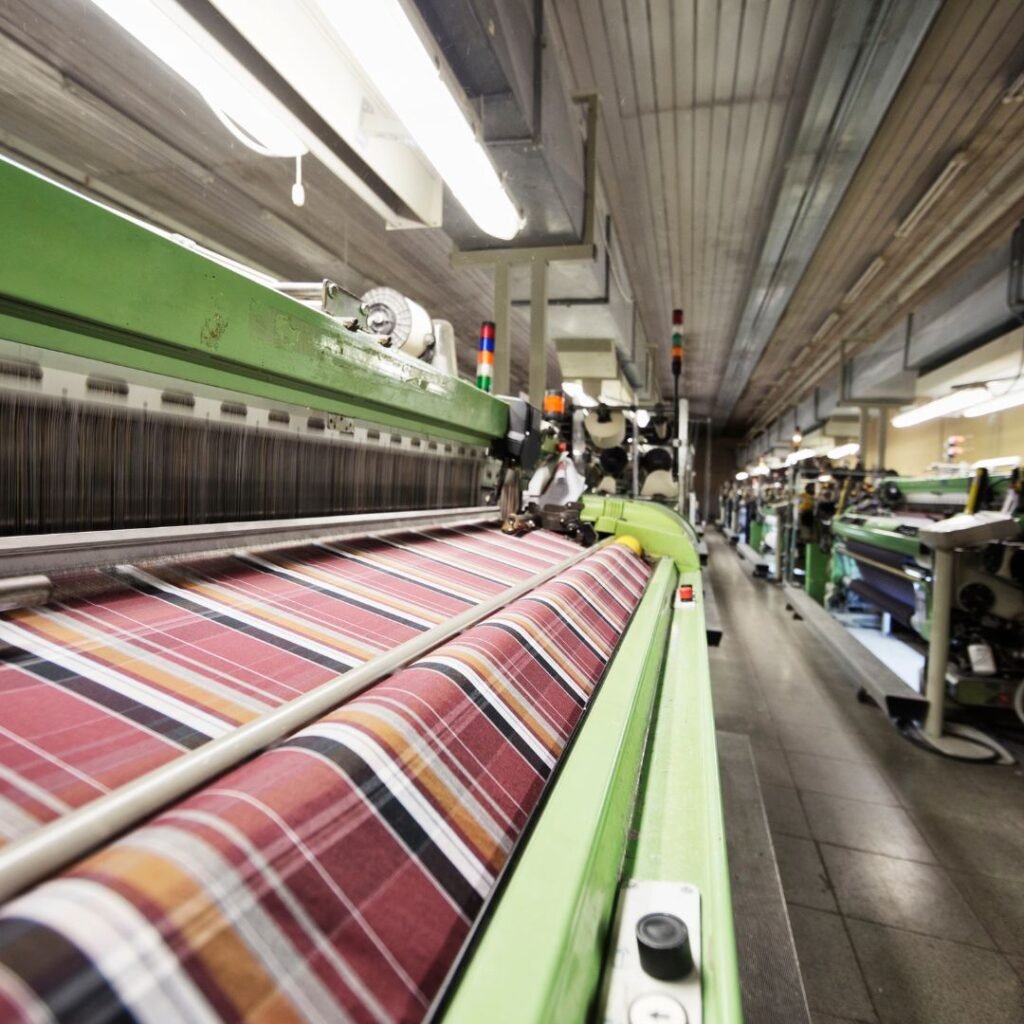Table of Contents

Introduction
The textile industry in India has experienced remarkable growth over the last decade, transforming into a global powerhouse. From traditional handloom to advanced technical textiles, the industry has shown resilience and adaptability. This blog provides an in-depth analysis of the Growth of Textile Industry in India in Last 10 Years, highlighting sustainability efforts, the future of technical textiles, and current opportunities and challenges.
Growth of Textile Industry in India in Last 10 Years
The last decade has been transformative for the Indian textile industry. Driven by factors such as increased domestic demand, favorable government policies, and a boost in exports, the industry has expanded significantly. According to the Ministry of Textiles, the market size was estimated at $150 billion in 2022 and is projected to reach $250 billion by 2025.
Several initiatives, such as the Production Linked Incentive (PLI) scheme, have played a pivotal role in this growth. The PLI scheme aims to enhance manufacturing capabilities and boost exports, making India a global leader in textile production.
Sustainability in the Textile Industry

As environmental concerns and consumer awareness continue to rise, sustainability in the textile industry has become a key focus. Indian textile manufacturers are increasingly adopting sustainable practices to reduce their environmental impact. These practices include:
- Using Organic Fibers: Organic cotton, jute, and other natural fibers are being used to minimize the use of synthetic materials.
- Natural Dyes: Eco-friendly dyes are replacing harmful chemical dyes.
- Water-Saving Technologies: Advanced technologies are being implemented to reduce water consumption in the dyeing and finishing processes.
- Carbon Footprint Reduction: Efforts are being made to lower carbon emissions through energy-efficient machinery and renewable energy sources.
Government initiatives like the Sustainable and Accelerated Adoption of Efficient Textile Technologies to Help Small Industries (SAATHI) scheme promote energy efficiency and sustainability in the textile sector.
Fashion Industry Sustainability

The fashion industry, a significant segment of the textile industry, has also embraced sustainability. Brands and designers are increasingly focusing on sustainable fashion practices, which include:
- Reducing Waste: Implementing zero-waste design techniques and promoting recycling and upcycling.
- Slow Fashion: Emphasizing quality and longevity over fast fashion trends.
- Ethical Practices: Ensuring fair labor practices and transparent supply chains.
This shift towards fashion industry sustainability is driven by consumer demand for eco-friendly and ethically produced clothing.
Future of Technical Textiles
The future of technical textiles in India looks promising, with increasing focus on research and development to create innovative and high-performance fabrics. Technical textiles are functional textiles used in industries like healthcare, construction, and automotive. They offer properties such as durability, breathability, and resistance to extreme conditions.
The Indian government’s National Technical Textiles Mission aims to position India as a global leader in technical textiles. This mission focuses on:
- Enhancing Domestic Production: Increasing the production capacity of technical textiles.
- Encouraging Innovation: Promoting research and development to create innovative products.
- Increasing Usage: Boosting the use of technical textiles across various industries.
Technical Garments
Technical garments, a subset of technical textiles, are designed to meet specific functional requirements. These garments include protective clothing, medical textiles, and sportswear, offering features like:
- Durability: Resistant to wear and tear.
- Breathability: Allows moisture to escape, keeping the wearer comfortable.
- Resistance to Extreme Conditions: Protects against harsh environments.
The demand for technical garments is on the rise due to the growing need for safety and performance-enhancing apparel in various sectors.
Recent Developments in Technical Textiles
Recent advancements in technical textiles highlight the industry’s commitment to innovation. These developments include:
- Nanotechnology: Creating textiles with enhanced properties such as stain resistance and antibacterial features.
- Smart Textiles: Integrating electronic components into fabrics for functionalities like temperature regulation and health monitoring.
- Advanced Materials: Developing materials with properties such as fire retardancy and moisture-wicking.
Collaborations between research institutions, universities, and textile manufacturers are driving the creation of cutting-edge technical textiles. These innovations not only meet domestic demand but also boost India’s export potential.
Technical Textile Industry in India
The technical textile industry in India is rapidly expanding, driven by increasing investments and supportive policies. The sector is expected to grow at a compound annual growth rate (CAGR) of 20% and reach $23 billion by 2027. Key initiatives supporting this growth include:
- Scheme for Promotion of Technical Textiles (SPTT): Encourages the production and usage of technical textiles.
- Centers of Excellence (CoEs): Established to promote research, training, and industry collaboration.
Opportunities of Textile Industry
The Indian textile industry presents numerous opportunities for growth and development. These include:
- Sustainable and Ethical Textiles: Growing consumer demand for eco-friendly and ethically produced textiles.
- E-commerce Expansion: Online platforms provide new sales channels and reach a wider audience.
- Technical Textiles Growth: Increasing demand for technical textiles in various industries.
- Government Support: Policies and initiatives that support skill development, infrastructure improvement, and export promotion.
Overview of Textile Industry in India

The overview of textile industry in India reveals a diverse and vibrant sector. It includes segments like cotton, jute, silk, wool, and synthetic fibers, making India one of the largest textile producers globally. The industry is characterized by:
- Extensive Production Base: From traditional handloom to modern industrial manufacturing.
- Employment Generation: Employs over 45 million people directly and 100 million indirectly.
- Export Potential: Significant contribution to India’s export earnings.
Information About Growth of Textile Industry in India in Last 10 Years
Information about textile industry in India highlights its historical significance and contemporary relevance. Key points include:
- Largest Producer of Cotton and Jute: India is the largest producer of cotton and jute globally.
- Second-Largest Producer of Silk: India is the second-largest producer of silk, known for its quality and variety.
- Fragmented Structure: A mix of organized and unorganized sectors, with a significant presence of small and medium enterprises.
Current Situation of Textile Industry in India
The current situation of textile industry in India is a blend of challenges and opportunities. While the industry has faced disruptions due to the COVID-19 pandemic, it has shown resilience and adaptability. Key aspects include:
- Recovery and Adaptation: Embracing digitalization, sustainable practices, and innovation to recover from the pandemic’s impact.
- Export Growth: Increasing focus on boosting exports through favorable policies and trade agreements.
- Environmental and Labor Challenges: Addressing issues like raw material price volatility, labor shortages, and environmental concerns.
Conclusion
The Indian textile industry has experienced substantial growth and transformation over the past decade. With a focus on sustainability, innovation, and government support, the industry is poised for continued success. The rise of technical textiles and sustainable fashion presents exciting opportunities for the future. By embracing these trends, the Indian textile industry can maintain its global leadership and drive further growth and development.
FAQS
Q1: How has the Growth of Textile Industry in India in Last 10 Years?
Ans: The textile industry in India has seen significant growth over the last decade, driven by increased domestic demand, favorable government policies, Urbanization in India and a boost in exports. The market size was estimated at $150 billion in 2022 and is projected to reach $250 billion by 2025.
Q2: What government initiatives have supported the growth of the textile industry in India? Ans: Key initiatives include the Production Linked Incentive (PLI) scheme, the Sustainable and Accelerated Adoption of Efficient Textile Technologies to Help Small Industries (SAATHI) scheme, and the National Technical Textiles Mission.
Q3: What sustainable practices are being adopted by the Indian textile industry?
Ans: Sustainable practices include using organic fibers, natural dyes, water-saving technologies, and reducing carbon footprints through energy-efficient machinery and renewable energy sources.
Q4. How is the fashion industry in India embracing sustainability?
Ans: The fashion industry is embracing sustainability by reducing waste, recycling materials, promoting slow fashion, and ensuring fair labor practices and transparent supply chains.
Q5. What is the future outlook for technical textiles in India?
Ans: The future of technical textiles in India looks promising with a focus on research and development, innovative high-performance fabrics, and government support through the National Technical Textiles Mission.
Your article helped me a lot, is there any more related content? Thanks!